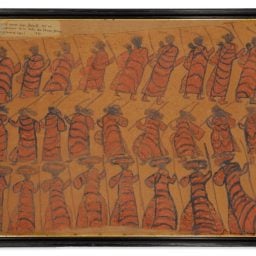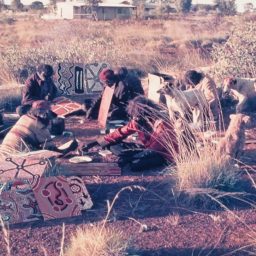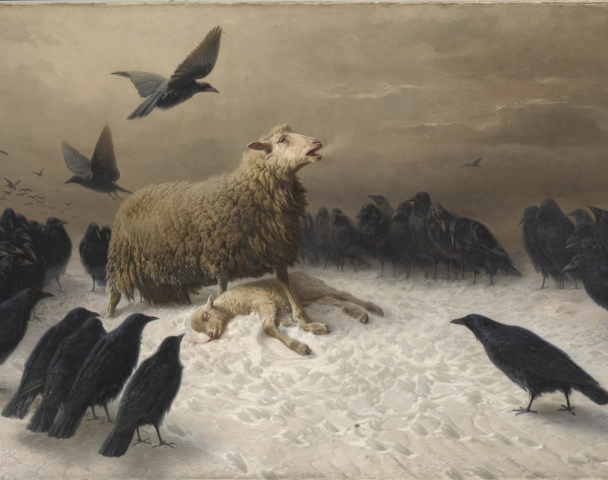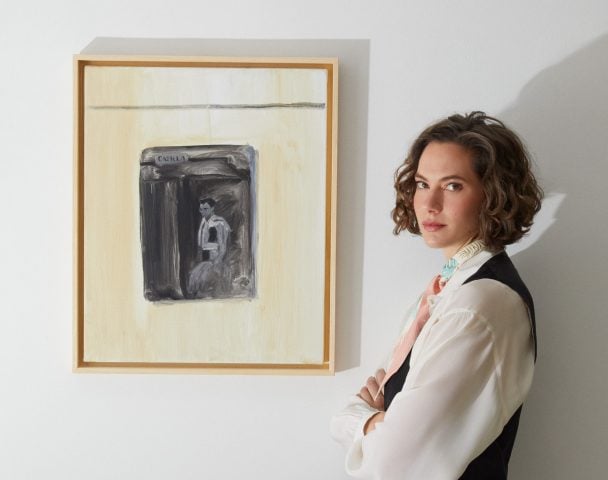First, Larry Gagosian filled his Madison Avenue premises with work by Australia’s Aboriginal desert painters. Then, the Metropolitan Museum of Art announced a new gallery dedicated to contemporary Australian Indigenous art would be part of its Rockefeller Wing revamp.
Now, Sotheby’s New York has given its annual Aboriginal Art auction a big boost, moving the live sale from a low-key winter slot to the marquee month of May.
These efforts by three of Manhattan’s most significant art-world players suggest that—behind the scenes, at least—Australian Indigenous art is now part of the conversation like never before. This Wednesday’s sale will test the market’s appetite publicly.
Sotheby’s seems confident that competition for the 103 lots will justify the calendar move to 25 May, labelling the auction’s combined high estimate of $5,884,000 conservative.
“This is the best selection of major Aboriginal paintings ever to be offered at Sotheby’s New York, and we have seen unprecedented interest,” says Tim Klingender, the auction house’s senior consultant for Australian art and a veteran of the secondary market in Australia.
Compared with previous sales in the series, there are fewer paintings by youngsters and cult stars and more blue-chip works that have already proven themselves on the secondary market.
But that doesn’t mean the catalogue lacks variety: It opens with shields and boomerangs dating from the early 1800s and then traverses centuries, closing with contemporary photography and text-based work.
Klingender admits that those still getting to grips with the evolving market may find the breadth of the sale daunting. For guidance, Artnet News spoke to prominent dealer D’Lan Davidson, who co-presented three recent Australian Indigenous exhibitions with Gagosian and who himself used to work at Sotheby’s.
These are the eight lots Davidson suggests we pay particularly close attention to.
William Barak
Corroboree (Women in possum skin cloaks) (1897)

William Barak, Corroboree (Women in possum skin cloaks) (1897). Courtesy of Sotheby’s.
Presale estimate: $300,000–$400,000.
Why It’s Desirable: “This rare work is the genuine discovery of the sale,” says Davidson. Barak’s figurative paintings and drawings formed part of his efforts to assert and preserve First Nations culture during colonisation, and only about 50 are thought to remain. “Most are now in institutional hands,” Davidson says. This example, which has been privately held in Switzerland since 1897, could be museum-bound, too: an Aboriginal heritage organisation in Melbourne has launched a crowdfunding campaign in an attempt to secure it for an Australian institution.
Djambalula
Mimih Ceremony (circa 1960)
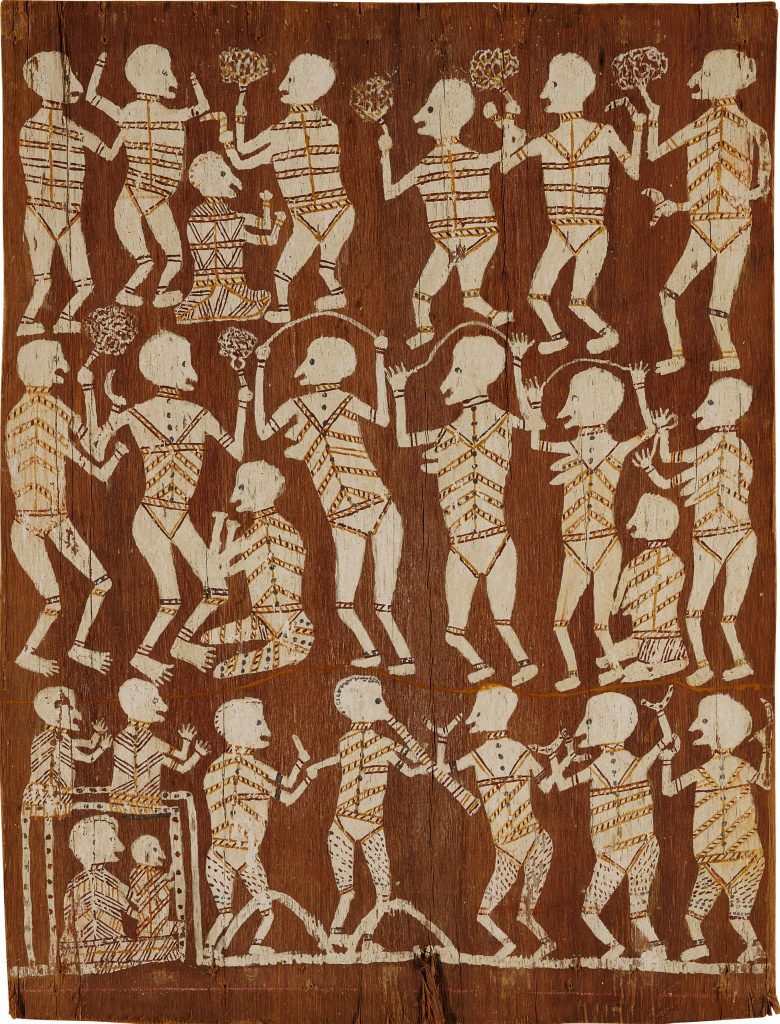
Djambalula, Mimih Ceremony (circa 1960). Courtesy of Sotheby’s.
Presale estimate: $30,000–$40,000
Why It’s Desirable: “I fondly remember seeing this painting displayed at The Met, alongside several other lots in the auction that were part of a long-term loan,” says Davidson. “What sets it apart from the other bark paintings in the sale is the wonderful repetitive composition depicting ceremony.” Davidson says the use of repeated figures in ceremonial works such as this and the Barak drawing creates an energetic viewing experience, akin to watching cell animation.
Emily Kame Kngwarreye
Alhalkere—Old Man Emu with Babies (1989)
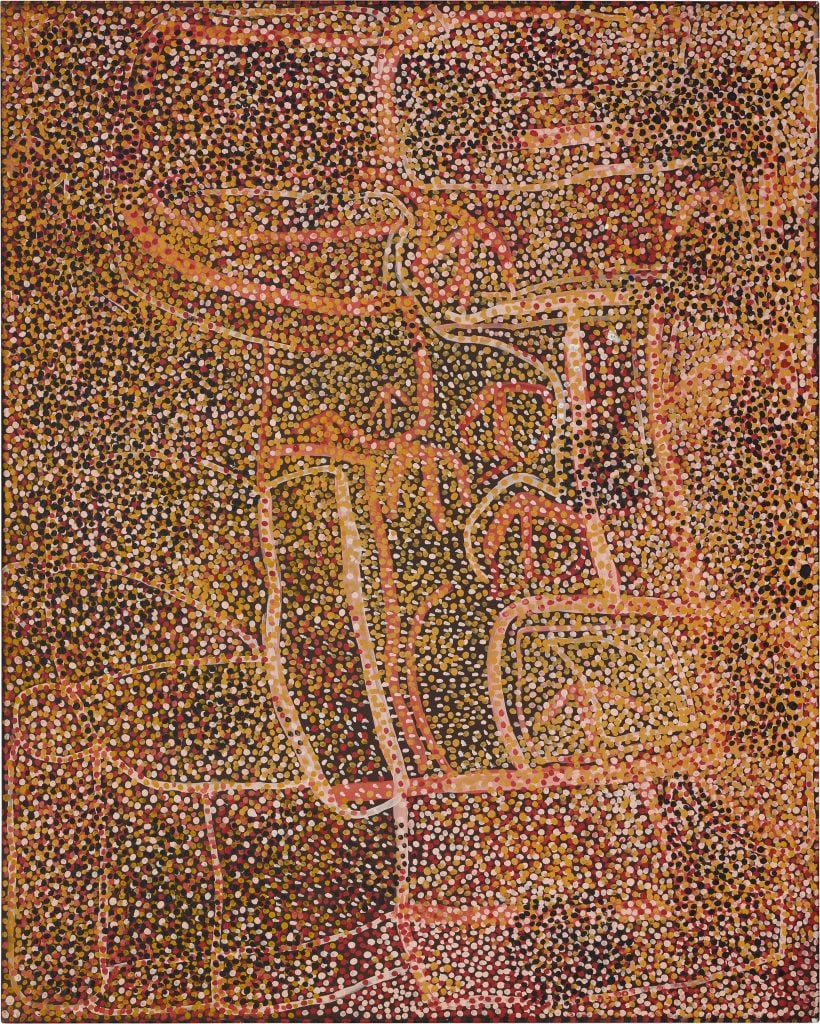
Emily Kame Kngwarreye, Alhalkere—Old Man Emu with Babies (1989). Courtesy of Sotheby’s.
Presale estimate: $500,000–$800,000
Why It’s Desirable: The Sotheby’s sale features no fewer than 10 works by Kngwarreye, Australia’s pre-eminent contemporary painter and the subject of a solo exhibition mounted by Gagosian and Davidson in Paris earlier this year. This lot dates from 1989, just one year after she began painting on canvas. “It is widely regarded as the pinnacle work from the period,” Davidson says, and he expects it will perform strongly in the sale. “Emily’s market continues to gain momentum, particularly outside Australia,” he says.
Mick Namarari Tjapaltjarri
Untitled (Artist’s Grandmother’s Country) (1990)
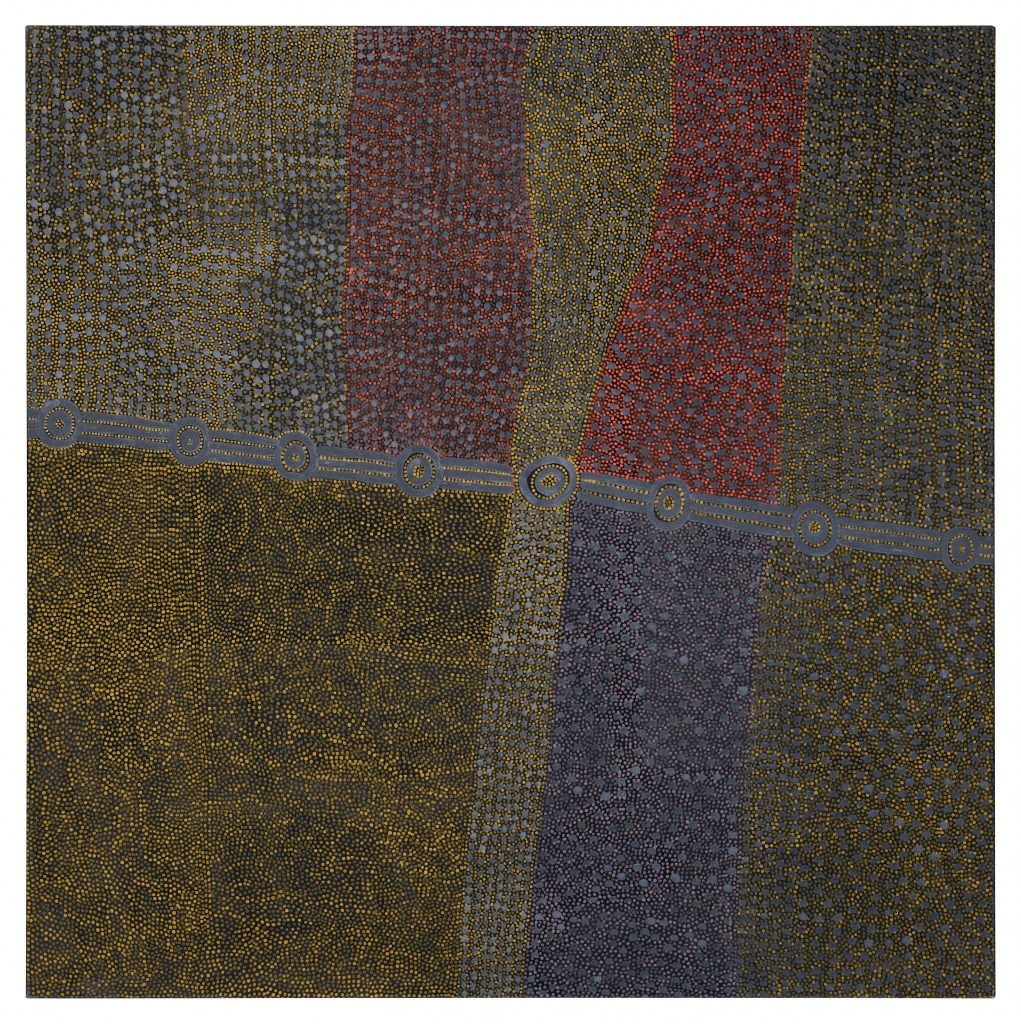
Mick Namarari Tjapaltjarri, Untitled (Artist’s Grandmother’s Country) (1990). Courtesy of Sotheby’s.
Presale estimate: $150,000–$200,000
Why It’s Desirable: “This is another exquisitely composed, large-formatted work by one of the most important founding fathers of Western Desert art,” says Davidson, referring to the 1970s movement during which Aboriginal artists began depicting their culture on canvas rather than bark and rock. “It’s regarded very highly among connoisseurs of the artist’s oeuvre.” Like many contemporary Australian Indigenous works, the painting appears purely abstract but contains cartographic and narrative elements.
Emily Kame Kngwarreye
Merne Everything V (1993)
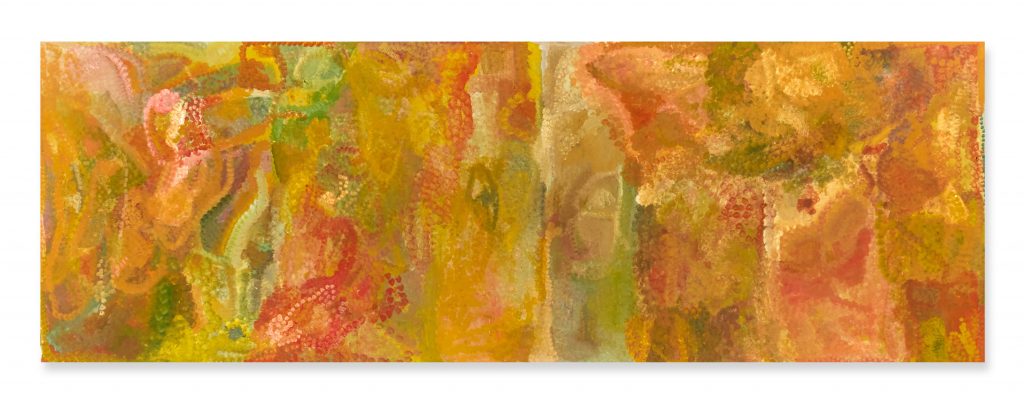
Emily Kame Kngwarreye, Merne Everything V (1993). Courtesy of Sotheby’s.
Presale estimate: $400,000–$600,000
Why It’s Desirable: Kngwarreye only painted on canvas for seven years but explored more styles during that time than many artists do in decades. This glowing 11-foot work dates from her middle period, when she broadened her palette and began using much larger dots, saturating the frame. The era divides opinion, which accounts for this lot’s comparatively modest estimate. “Generally speaking, the strongest areas of collecting in Emily’s market are the beginning and the end periods,” says Davidson. “However, the artist produced a small number of well composed and monumental works from the middle period which always command a different type of attention. This is one of those pictures.”
Naata Nungurrayi
Marrapinti (2002)
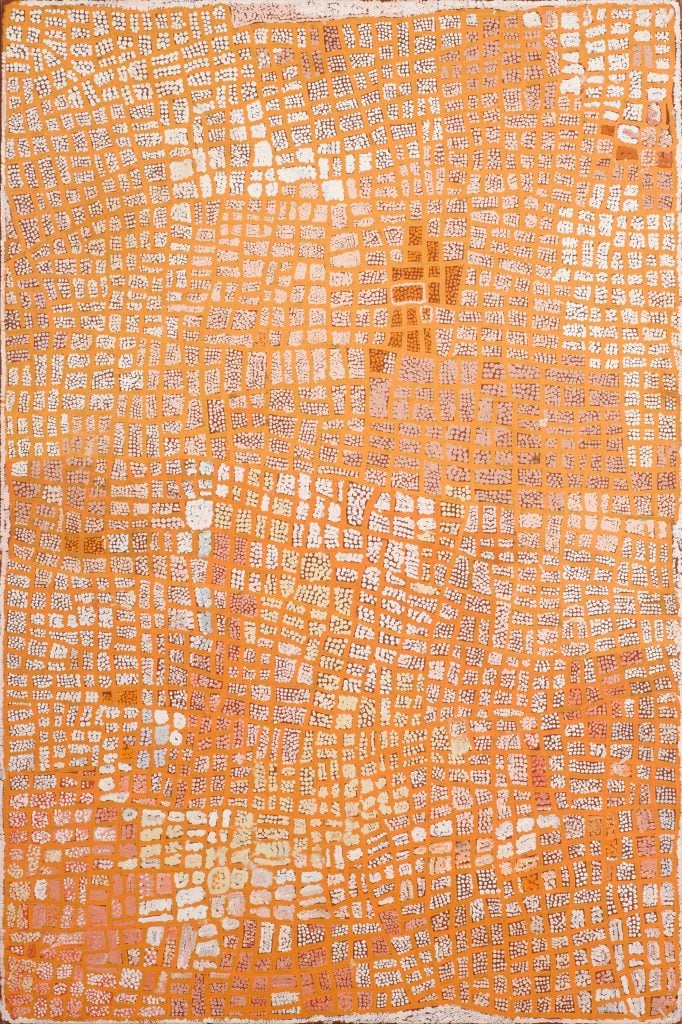
Naata Nungurrayi, Marrapinti (2002). Courtesy of Sotheby’s.
Presale estimate: $80,000–$120,000
Why It’s Desirable: A leading Western Desert artist from the Papunya Tula school, Nungurrayi is a critic’s favourite whom Davidson says has yet to reach her market peak. “Due to cultural law, the women at Papunya were only formally allowed to paint in 1996,” he explains. “Soon after, Naata became the most accomplished of all painters at Papunya. The offered painting is an exceptional example by this most undervalued artist.”
Makinti Napanangka
Lupulnga (2003)
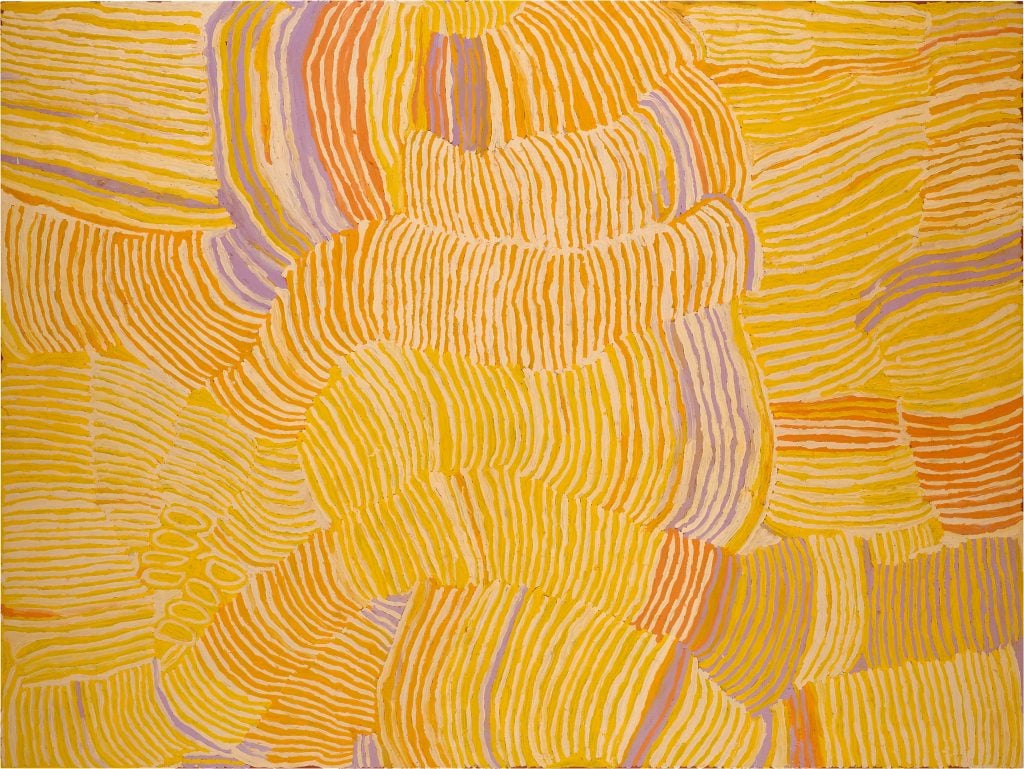
Makinti Napanangka, Lupulnga (2003). Courtesy of Sotheby’s.
Presale estimate: $120,000–$180,000 USD
Why It’s Desirable: Like Nungarrayi, Napanangka (circa 1930–2011) began painting for Papunya Tula Artists in the 1990s and currently commands lower prices than some of her male contemporaries. But that is changing, Davidsons says—partly because a number of significant works have recently come onto the secondary market. “There are only a handful of paintings of this large scale created by the artist on record at Papunya Tula Artists, making this an exceedingly rare picture,” he adds.
Daniel Walbidi
Kirriwirri (2010)
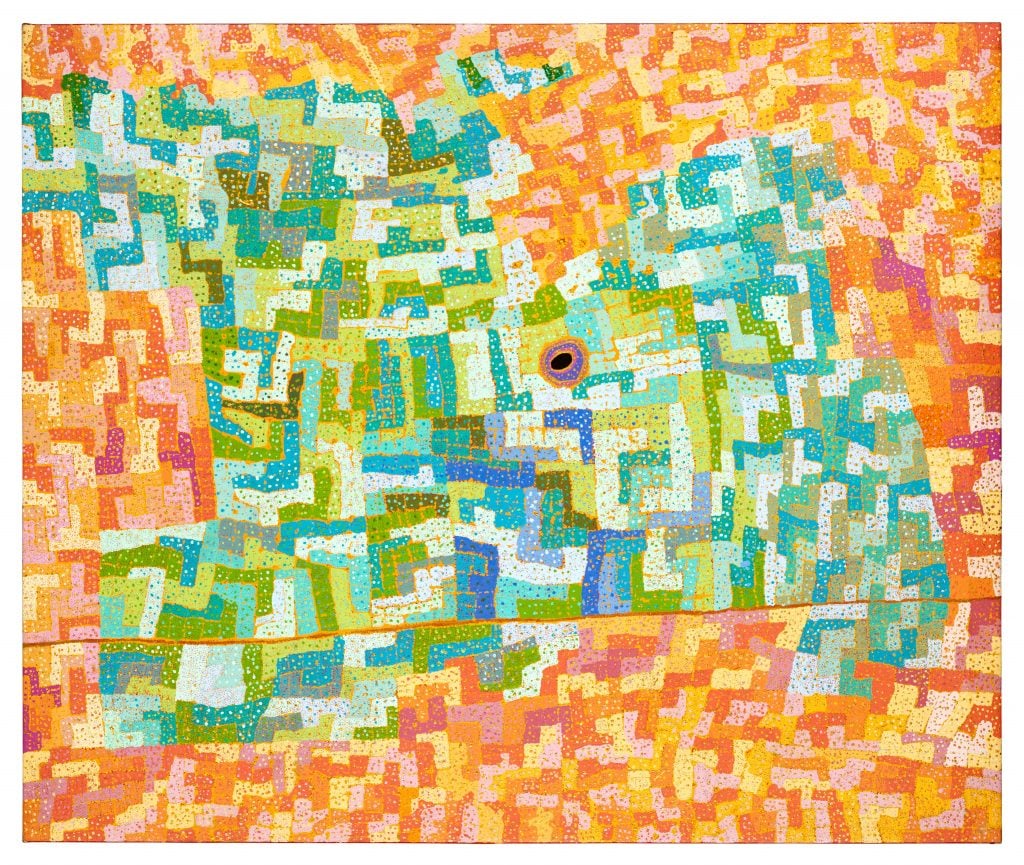
Daniel Walbidi, Kirriwirri (2010). Courtesy of Sotheby’s.
Presale estimate: $80,000–$120,000
Why It’s Desirable: Could Walbidi be the first practising Australian Indigenous painter to “break out” internationally? Davidson thinks he should be, and is kickstarting the process by mounting a Walbidi solo exhibition in New York this October with the artist’s representative, Short Street Gallery. “I think it is fair to say that, as a practising artist, Daniel has now reached a ceiling in the limited Australian market,” Davidson says. “A very strong domestic auction result earlier this year set a precedent, but I think this offered work will eclipse that.”











